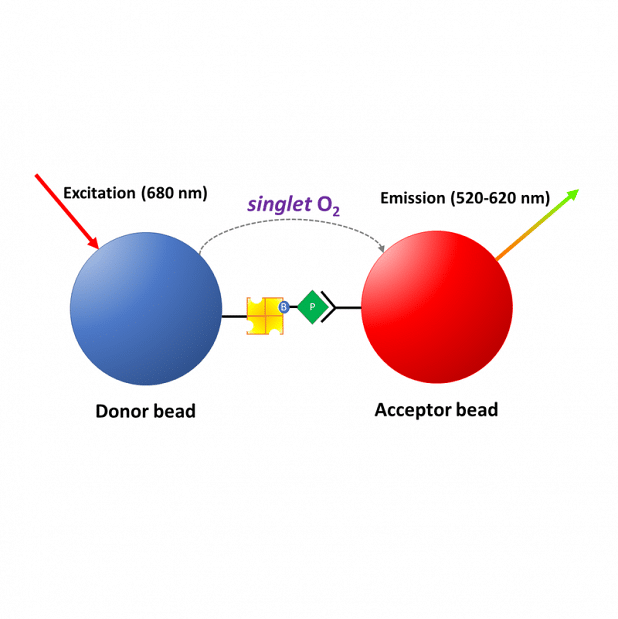ALPHASCREEN® PRINCIPLE
AlphaScreen® relies on hydrogel-coated donor and acceptor beads providing functional groups for conjugation to biomolecules. The beads come in close proximity when the biomolecules interact by molecular binding, e.g. antibody-antigen or receptor-ligand. Laser excitation at 680 nm of a photosensitiser present on the donor bead results in the production of singlet oxygen. The singlet oxygen migrates to react with chemiluminescers on the acceptor bead. The chemiluminescers then activate fluorophores emitting light at 520 – 620 nm. This reaction cascade results in a huge amplification of the signal. The short lifetime of singlet oxygen in aqueous solution (~4 μs) allows diffusion over a distance up to ~200 nm. This means that, if donor and acceptor beads are not in close proximity, no signal is produced.

ALPHASCREEN® APPLICATIONS
AlphaScreen® is a homogeneous method that is well suited for miniaturization and use in drug discovery screening. It has proven to be a reliable and sensitive method in many detection assays, including:
- GPCR secondary messengers like cyclic AMP or IP3.
- Enzyme assays (kinases, helicases, proteases, phosphatases…)
- Immunoassays

MICROPLATE READERS SUITABLE FOR ALPHASCREEN®
A laser emitting at 680 nm as excitation source is required, and high-sensitivity luminescence using filters is recommended, for AlphaScreen® measurements. All microplate readers below are suitable for AlphaScreen®.
